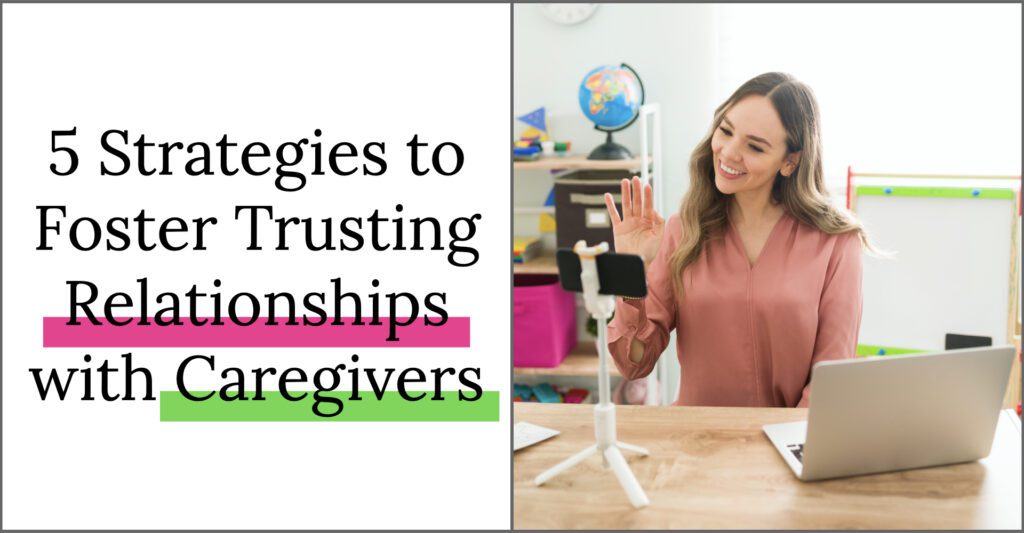
While it may not seem front and center during a busy school day, relationships with caregivers make a huge difference in our work with students.
Taking time to build and maintain relationships with caregivers shows that we are on the same team. That we are working in partnership for the best interest of their children. Just like with our students, these relationships and communities don’t just appear overnight. Fostering these relationships takes time and effort, and in many cases, thinking outside the box.
This can seem difficult and overwhelming, especially in the time of virtual or hybrid learning! My hope is that these strategies provide simple but meaningful support as you foster new relationships year after year.
Acknowledge Where Caregivers are Coming From
School-related trauma experienced by caregivers can have a significant impact on our relationships with them. Being mindful of caregivers’ relationships with schooling, while actively working to break down emotional barriers can help us create a more welcoming environment.
Caregivers can come to us with various school-related trauma, experienced as a student themselves or as a caregiver (or both!). Fears can often include (but are not limited to):
- Schools/Educators lack of cultural responsiveness when making decisions for their child.
- Labeling their child. There are many stigmas they may have internalized around those labels. Caregivers may also have concerns about overrepresentation of certain populations qualifying for services.
- Being ignored when trying to advocate for their child’s needs.
- Personal experience with/understanding of being pushed out of schools (research “school to prison pipeline”).
Fears can be a huge roadblock to building relationships with caregivers. Proactively searching for ways to show that school is a safe, supportive, and welcoming place for them and their child can make a big difference.
Get to Know Caregivers
One of the best, and most important ways, to build relationships with caregivers is simple: get to know them! Offer space for caregivers to share their hopes and goals for their children. Caregivers are the absolute experts on their students. Their knowledge and insight will only help us better serve our students at school. The more we know our students’ caregivers, the more we can incorporate their insights into our work with their children, and the more included they will feel. This is a win-win!
At this point, you might be saying, “Ok, Jillian, I hear what you’re saying, but I’ve been spending SO MUCH time getting to know my students, working on routines in the classroom, planning my lessons, teaching my small groups, keeping track of all of the papers and meetings… How do I also get to know caregivers?!”. Friend, I promise I do NOT want to add to your already full plate. I’m hopeful these ideas will flow right into the things you’re already doing! For example:
- Use a “getting to know you form” at the beginning of the year
- Ask about important cultural traditions and holidays at the beginning of the year
- Include these important holidays are ready to add to our inclusive classroom calendar
Consider Home Language and Technology Access and Time
Ensuring that communication is not a barrier to building relationships with our classrooms is key! After going through the responses from our “getting to know you form,” I work to make sure that I’m meeting the needs of caregivers’ language preferences and their access to technology.
Some simple ways to support communication with caregivers include:
- Send a paper copy and a digital copy of a classroom newsletter.
- Make a point to check in occasionally with families via phone or email if they choose not to use the classroom communication app.
- Translate newsletters and important communications into the caregiver’s home language.
- Offer office hours to call the school when you know you’ll be at your phone and able to take a call.
Teacher Tip: When struggling to work around language and/or technology barriers, check with your administration. Advocate for translation services, hotspots, or providing technology support. You might be surprised what you can make available to your families.
Share Positive News Regularly
Many times in our careers, we need to talk about concerns, solve problems, or have other hard conversations with caregivers. While these conversations are never easy, having a previously established relationship with caregivers makes all the difference. They know we come from a place of understanding and deep care for their student. Before I have to share any hard news, I make sure that I’ve had at least one (but preferably two or three!) positive conversation(s).
The good news here: it can be quick and easy to start sharing positive news at the beginning of the year (and continue all year long!). How? Allow me to introduce you to the chatting checklist. On the first day of school, I start a checklist. Each day I try to connect with 1-3 families by sharing a positive anecdote from the day. By week two, I’ve usually connected with all the families in my class.
The best part? It’s now a habit! Now I know that I’m touching base with EVERY student’s caregivers a few times a year. I love how this practice encourages me to look for the good in my students. And caregivers really appreciate hearing positive anecdotes about their children.
Regular positive updates show caregivers that we are in a partnership. Our goals for their children are similar and we are on the same team of working together to support their child academically, socially, and emotionally.
Classroom Communication
Once you have established relationships with caregivers, it’s so important to keep them in the loop of what’s going on in the classroom! There are so many benefits to establishing and keeping up with regular classroom communications.
I hear you, I hear you. Writing a newsletter every week? Who has the time for that? Not to worry! After YEARS of trying to get it just right, I’ve got a few newsletter hacks for you:
- Use a template: I like to keep it simple. Remember, these newsletters are for caregivers, so you don’t need fancy designs or extra flair if that’s not your thing.
- Bulleted lists: Making the shift to bulleted lists rather than long paragraphs made my life so much easier. It’s also more likely that caregivers will read it if they’re pressed for time.
- Consistent format: I pick a few headings that stay the same for every newsletter, then update the new information into 3-4 bullets under each section.
- Frequency: Whether is weekly or monthly or something in between, the key is that you’ve got a consistent way to share updates about academic content and important classroom information.
While paper or email newsletters work well for many teachers and families, classroom apps like Bloomz and Remind, also offer some unique and easy-to-use functions. These apps allow you to:
- Share updates quickly with your whole group of caregivers
- Send your newsletter right on the app along with pictures
- Keep updates in the feed for caregivers to revisit as needed
- Allow caregivers the option to send you messages right in the app
This can be great for caregivers that work late and may not be able to check a newsletter in their child’s bag at night, or for caregivers living in multiple homes, so everyone can get the same message in real-time.
*If you are choosing to include photographs of students or student work in your newsletters or digital updates, please make sure you have permission from caregivers and are aware of your school or district policy around sharing photographs.
Opportunities to Bring Home Connections into School
Deepening the home-school connection is another way to foster relationships with caregivers. Caregivers and students have SO MANY rich experiences and ideas that make wonderful additions to the classroom community. These often have ties to the curriculum, as well. We can incorporate these experiences into so many areas including learning about:
- cultures
- holidays
- careers and jobs
- special talents
- foods
- even reading a special story
When in-person is not an option, caregivers can support their children by sharing via Zoom or a pre-recorded video. They can also send in a book, pictures, an artifact, or a write-up to share with the class.
I begin the year by asking caregivers if there is anything they’d like to share with the class. Sharing upcoming curriculum topics via classroom newsletters is also a great way to discover connections ahead of time. Keeping everyone in the loop throughout the year keeps these home-school connections strong.
I hope that you’ve found a few ways to build on your relationships with caregivers. I’d love to hear your favorite ways to form those connections in your classroom.

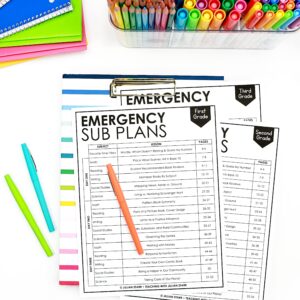

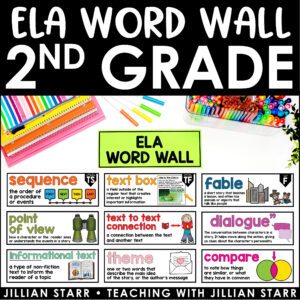
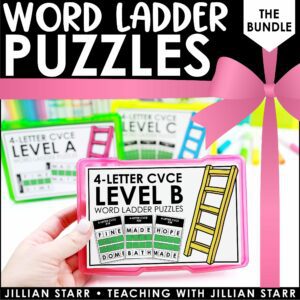
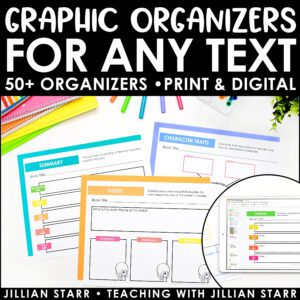


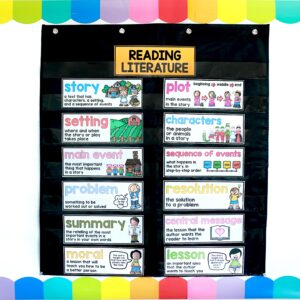


Thank you for so many valuable ideas.. I have retired from class teaching now and although I did some of these things, I really wish that we had ongoing input like yours. I think you are amazing! Best teacher resource ever 🥳
Btw, when I started teaching we used to do a home visit and the beginning of the year. That was so informative for the teacher and affirming for the family.
Thanks again